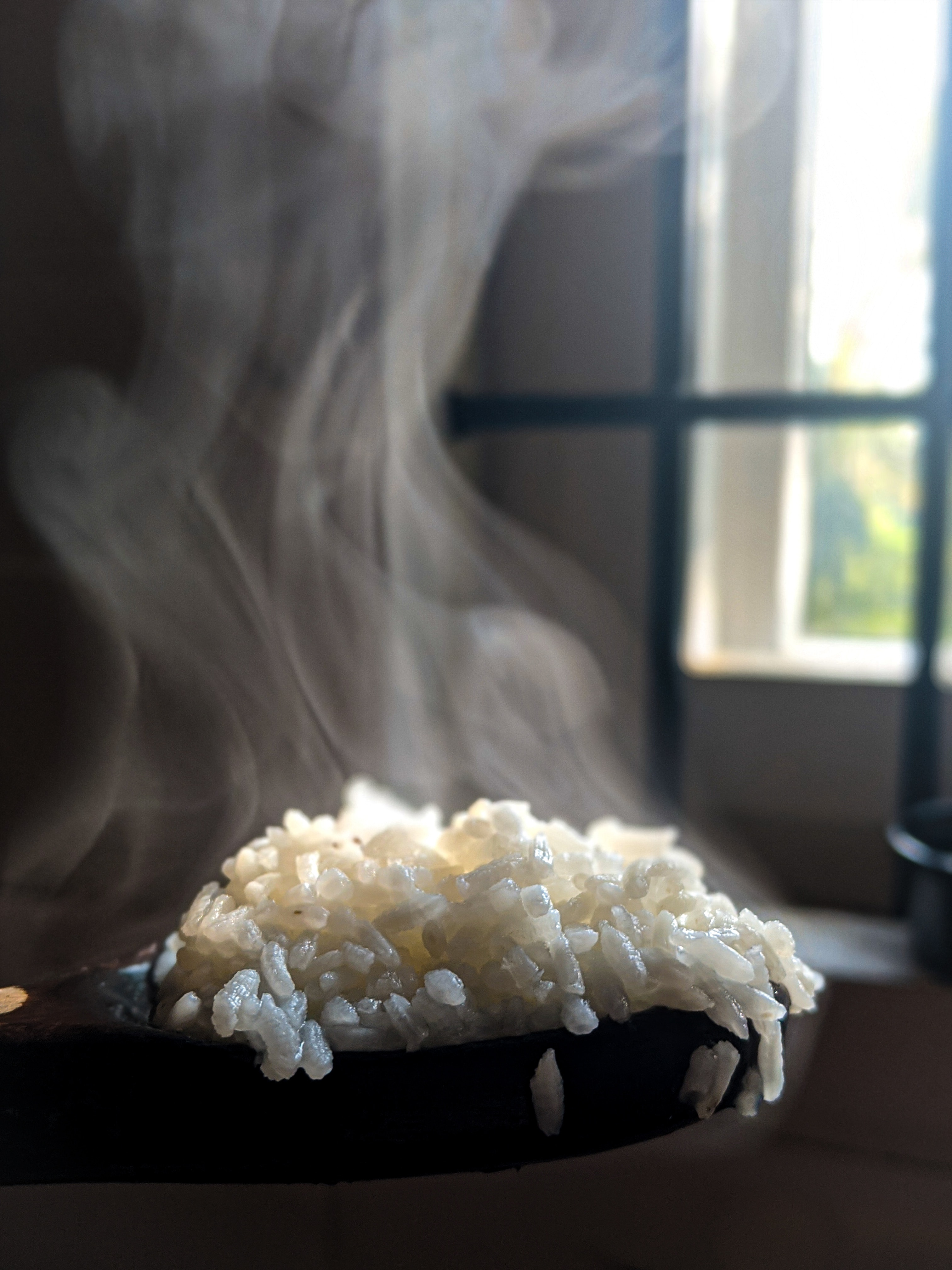In many cultures, rice is a staple food that is eaten in a wide range of recipes. Yet, if you’ve ever been cooking rice and noticed that it bubbled up like soap, you could be left perplexed. Some people may find this strange phenomenon confusing or even concerning. But relax, you’re not by yourself! This blog post will examine possible causes and solutions for why your rice may be bubbling like soap. So let’s explore the science of rice cooking and solve the riddles underlying this strange occurrence.
Anybody, regardless of their level of culinary ability, can experience the typical occurrence of rice bubbling like soap during the cooking process. The starch in the rice normally releases into the water, creating bubbles that rise to the surface in a manner akin to how soap bubbles form.
Using too much water when cooking rice is a typical reason for it to bubble like soap. The starch from the rice is released into the water when there is an excess of water, which is what causes the bubbles to form. Not cleaning the rice before cooking is another potential contributing factor because it can leave the rice grains with too much starch.

The incorrect rice might also cause rice to bubble up like soap. There are various quantities of starch in different types of rice, and some may need more or less water to boil properly. Also, the temperature at which the food is cooked might have an impact because too hot of a water bath will cause the rice to cook unevenly and release too much starch.
The following table displays the approximate starch content of various varieties of rice:
| Rice Type | Starch Level |
| Basmati | Low |
| Brown | High |
| Jasmine | Medium |
| Arborio (risotto) | High |
| Sushi (short grain) | High |
| Wild | Low |
Can rice bubbling like soap be harmful to consume?
In general, rice that bubbles like soap is safe to eat. Usually, water and starch—both of which are safe to eat—make up the bubbles. Yet, an abundance of bubbles may be a sign of overcooking and a bad texture or flavour in the rice.
Also, if you’ve included any additional ingredients in the rice, such spices or veggies, the extra bubbles may cause the contents to cling together, which will make the dish taste less pleasant.
The water may occasionally boil over due to the bubbles, leaving a mess on your stove. This can be avoided by keeping an eye on the rice while it cooks and adjusting the heat as necessary to keep the water from boiling over.
Overall, while eating rice that bubbles like soap may not be dangerous, it can change the texture and flavour of the rice as well as any additional items you may have used. Your rice will cook evenly and be free of extra starch bubbles if you use the required amount of water and follow the suggested cooking methods.

How do I prevent my rice from bubbling like soap?
By taking the following actions, you can stop rice from bubbling like soap:
- Accurately measure the water and rice: Use the rice to water ratio suggested for the variety of rice you are cooking. The majority of rice varieties need a ratio of 1:2. (one cup of rice to two cups of water).
- Rice should be rinsed before cooking. To get rid of extra starch that can cause bubbling, rinse the rice in cold water until the water is clear.
- Choose a pot that fits your needs and has a secure lid: Use the proper-sized pot for the quantity of rice you are cooking. A tight-fitting lid aids in containing the steam and preventing the formation of bubbles.
- Before adding the rice, bring the water to a boil. Begin with cold water and bring it to a boil. By doing this, the quantity of starch released into the water is decreased.
- Once the water has reached a boil, lower the heat to a low setting and let the rice to simmer. This aids in preventing the release and bubbling of extra starch.
- After the rice is finished cooking, allow it to rest for a few minutes with the lid on. This aids in spreading the liquid uniformly and averts the formation of bubbles.
You can make sure your rice cooks evenly and is free of extra starch bubbles by following these instructions.

Should rice with bubbles be rinsed after cooking?
Although it’s not necessary to rinse bubble-containing rice after cooking, it’s usually a good idea to do so regardless of whether the rice has bubbles.
Before cooking, rinse the rice to help get rid of any extra starch, dust, or debris that may be on the grains. This can lessen clumping and enhance the texture of the cooked rice.
The surplus starch in your rice has probably already been released into the water during cooking if it contains bubbles. The amount of bubbles may not change greatly if the rice is rinsed at this point.
You can make sure your rice cooks evenly and is free of extra starch bubbles by following these instructions.
But, you can rinse the cooked rice with cold water if you have any concerns about the rice’s quality or want to be sure there is no residual starch in it. This can aid in removing any lingering starch or debris from the rice grains.
After cooking, rinsing the rice can help it cool down more quickly, making it easier to handle and lowering the chance of bacterial growth. Also, washing rice might help get rid of any extra salt or seasoning that could be on the grains.
Relevant Articles
Is It Safe To Use A Rice Cooker With The Coating Peeling?

Comments are closed